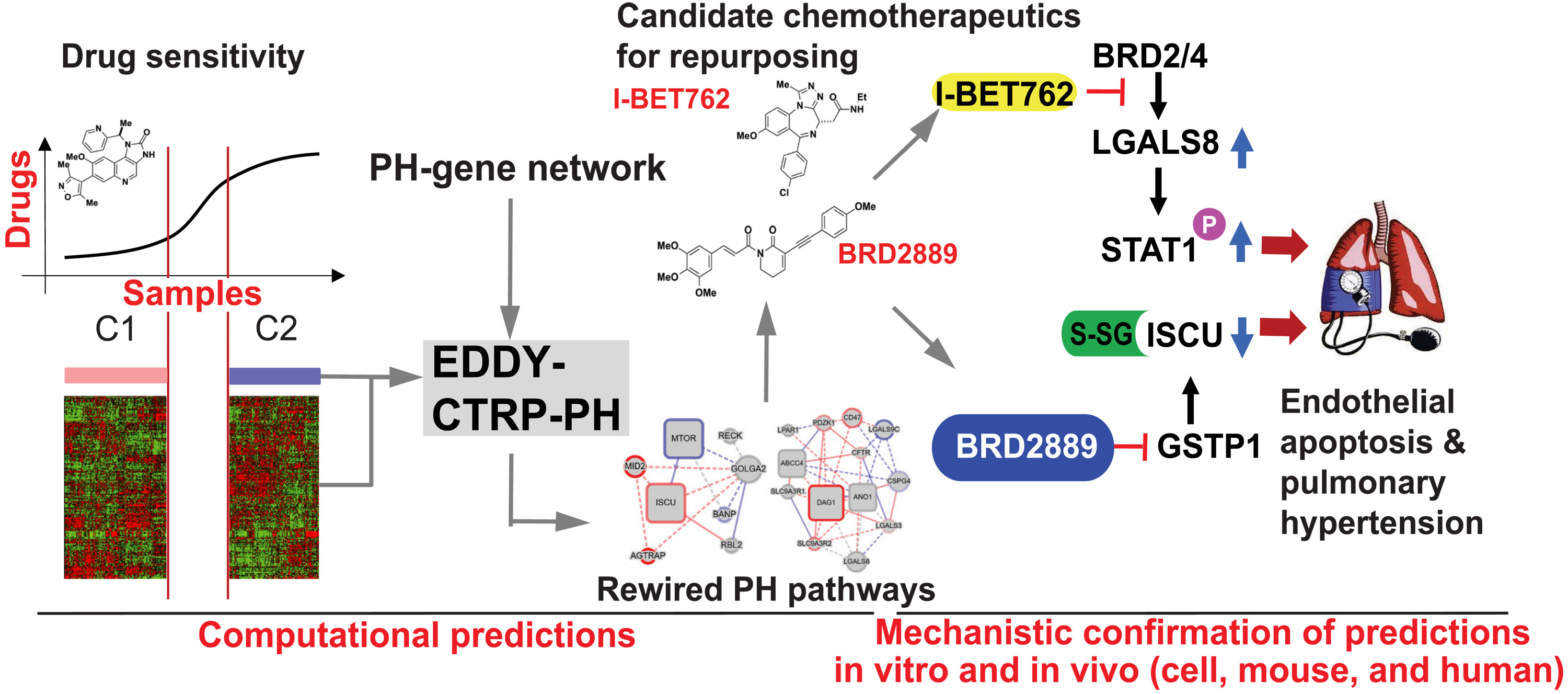Abstract
Cancer therapies are being considered for treating rare noncancerous diseases like pulmonary hypertension (PH), but effective computational screening is lacking. Via transcriptomic differential dependency analyses leveraging parallels between cancer and PH, we mapped a landscape of cancer drug functions dependent upon rewiring of PH gene clusters. Bromodomain and extra-terminal motif (BET) protein inhibitors were predicted to rely upon several gene clusters inclusive of galectin-8 (LGALS8). Correspondingly, LGALS8 was found to mediate the BET inhibitor–dependent control of endothelial apoptosis, an essential role for PH in vivo. Separately, a piperlongumine analog’s actions were predicted to depend upon the iron-sulfur biogenesis gene ISCU. Correspondingly, the analog was found to inhibit ISCU glutathionylation, rescuing oxidative metabolism, decreasing endothelial apoptosis, and improving PH. Thus, we identified crucial drug-gene axes central to endothelial dysfunction and therapeutic priorities for PH. These results establish a wide-ranging, network dependency platform to redefine cancer drugs for use in noncancerous conditions.
See PVAMU press release and UPMC press release.
